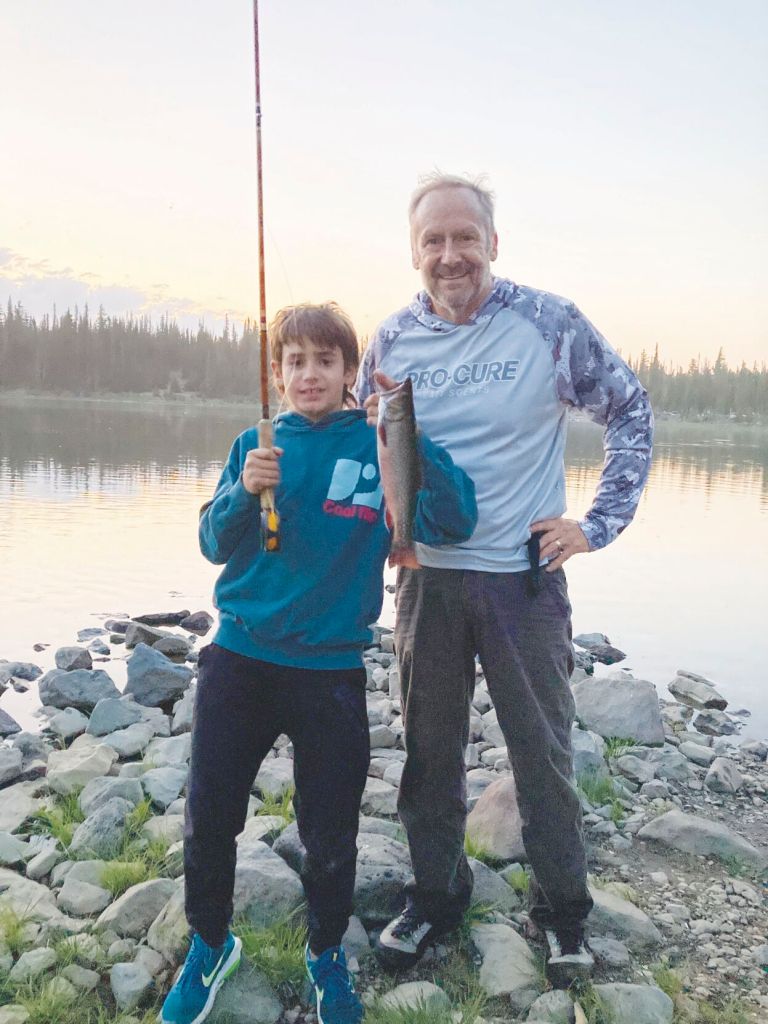On the Trail: Vintage fly gear for today’s rainbow trout
Published 5:00 am Wednesday, August 14, 2024

- A soft hackle mayfly emerger accounted for this 13-inch brook trout. Nine-year-old Holden has caught a lot of fish, and in his expert analysis, the Wright & McGill is as good of a rod as he has ever fished with.
Ever since I started at this game of casting small flies to olive-backed trout, I have found myself taking other people along, folks who didn’t have their own fly rods. Lately, some of these people are the offspring of my offspring. Others are my own age but through unfortunate circumstances were born in places such as Sacramento or Cleveland or Lower Alabama where trout streams were not in their figurative backyards.
Trending
These poor folks were and are perfectly happy to abuse fly rods from my small collection curated over 40-plus years of fishing fine and far off.
This might not seem like a big deal until a 6-year-old drops an Orvis Helios on the ground or a 60-year-old steps on a G. Loomis rod tip. After an afternoon on one of my favorite trout streams and enough inner cringe, I called an old friend and called in a favor. My friend Bill Herrick answered the phone. He could hear the angst.
“You have an old fly rod you’re not using, right? I want it.”
Trending
Then I called another old friend.
“You have an old fly reel you don’t use anymore, right? I want it.”
Both items showed up on my doorstep and the only thing I needed was a fly line. I placed a bid on eBay and bought a fly line for $13.
For $13 I had a complete state-of-the-art flyfishing setup. State-of-the-art for 1967 that is.
The rod is a Wright & McGill Champion, a pale tobacco color with chocolate brown over mylar wrap, 8 ½ feet long and rated for a No. 7 line. From the best I can deduce, its vintage is 1967. Which, I understand, was a very good year if you weren’t eligible for the draft.
Of lasting value
The word vintage can refer to the year something was made, minted or bottled. The word is often used to denote high quality and lasting value, or showing the best characteristics typical of the person (or company) who created it.
The Wright & McGill Champion has seen a lot of use in the last five years, having not been called to work since the advent of graphite in the 1980s. My grandchildren, Ava and Holden, have caught a lot of trout and panfish on the Champion. And my friends have bent it on fish on multiple trips each year.
Every year I manage to catch a few trout on the old rig, too. Enough that the Champion has found a permanent place in my collection. Enough that it occurred to me there might be a reason to get another old fly rod. I was just starting to think about it, when my old friend Bill Lewis brought me an aluminum rod tube. This was three weeks ago. He set it down on the table in front of me and I knew what was inside it before I cracked the top. It was an Eagle Claw Trailmaster, 7 ½ feet long in the original tube with the original cloth bag. Bill had purchased it new, and used it less than half a dozen times. The Trailmaster was a convertible from spinning rod handle to fly rod. And like most other fly rods of its time was rated for a No. 7 line.
As a fly rod, by today’s standards, it is somewhat less than average. As an item of high quality and significance, it was time to take it fishing again.
I lost no time in calling my friend Tom Philiben. I knew if anyone would, Tom would have an old reel. I drove over to his house, explained my predicament, and he ushered me into his fly tying room where he had an old rod with an even older reel, a J.C. Higgins 47E. At home I had an old 7-weight line, and after I had cleaned the line and wound it over the old Dacron backing, I was in business. One more day went by and I was on the water on a mountain lake. I had three fly rods along, but I wanted to catch a trout on the Trailmaster.
Waded out almost to the tops of the waders, I made that Trailmaster hum. The line was old and it hit the water in S-curves, but it wasn’t anything a chunky rainbow couldn’t straighten out. In about 10 minutes, I was playing a trout on the old rod that hadn’t been bent since the early ’70s.
I have come to respect, admire and begun to acquire a stable of old fly rods and reels. What I like about them is they were built tough, are easy to come by in garage sales and online auctions, and they are a good way to teach a new angler the art of fishing fine and far off.









